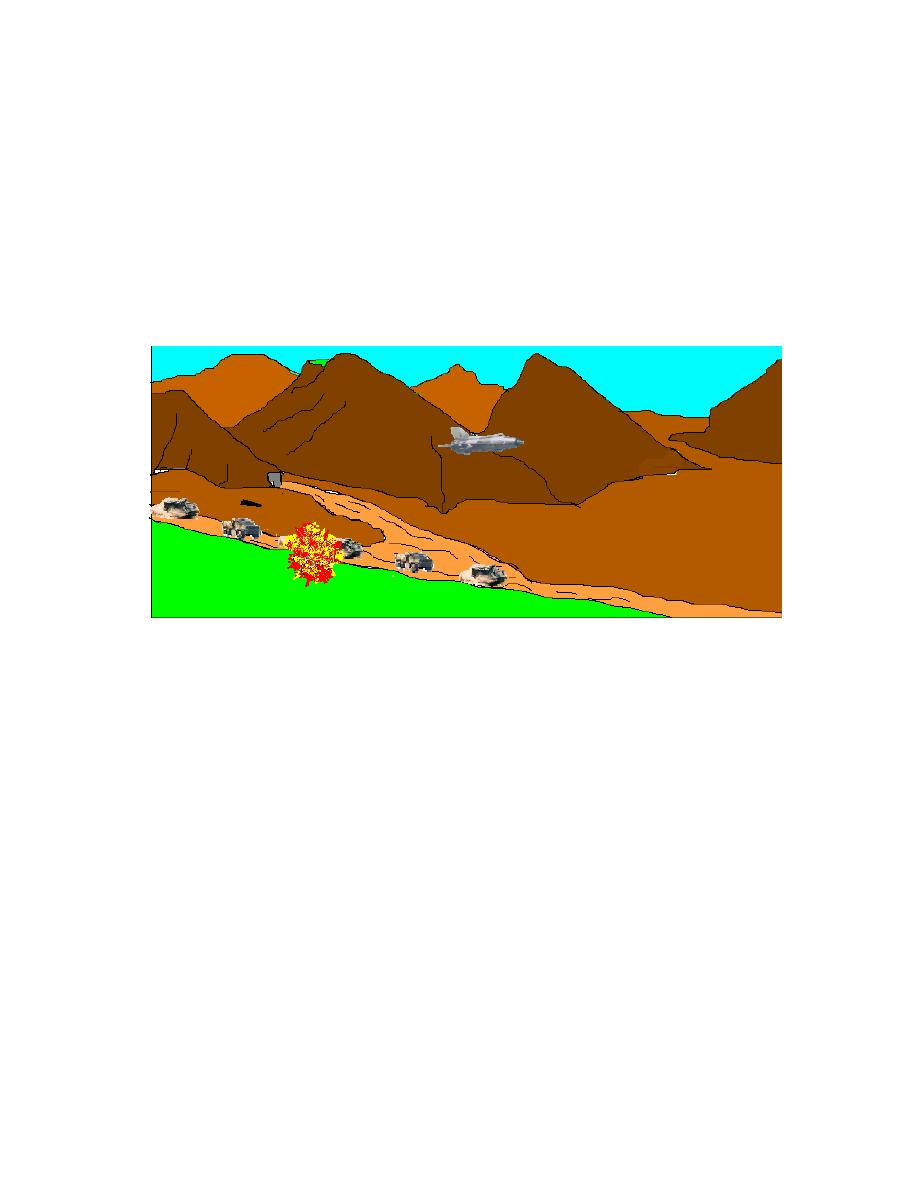
PART E - EMPLOY PASSIVE AIR DEFENSE MEASURES IN A CONVOY
1. Identify Passive Air Defense Measures. A convoy is vulnerable to air attack since it is
easily seen from the air. Movements along a road are hampered by shoulders, ditches, and
embankments which restrict freedom of maneuver. Additionally, since vehicles are stretched out in
a long line, convoys represent high-value, hard-to-defend, but easy to hit targets to enemy ground
attack aircraft. This linear array also makes command and control very difficult. A high
probability of air attack must be assumed in planning a convoy, and you as well as all other
soldiers in the convoy must know exactly what to do if attacked (Figure 19).
Figure 19. Convoy Under Attack
Not all convoys will be provided dedicated air defense assets. Some convoys must rely on organic
passive and active air defense measures for protection. As in defended areas, passive air defense
includes attack avoidance and damage limiting measures. Active air defense involves shooting
back and killing or driving off the attacker.
2. Employ Attack Avoidance. Reduce the visible signature to the point where the enemy
cannot find the convoy. While it is not possible to become invisible, every step taken in that
direction decreases the likelihood that the convoy will be spotted. Not much can be done to change
the shape of a vehicle moving down the road, but the type of cargo being transported can be
disguised or concealed by covering it with a tarp. By rigging traps and bows over the cargo
compartment, the nature of the cargo can be concealed from the enemy pilot. Other effective
passive measures are--
a. Train operators, as they disperse to look for a bush, tree, or some other means of
concealment to break their vehicles' shapes as seen from the air.
b. If vehicles are not already painted in a pattern to blend with the terrain and to break the
outline, use mud, camouflage nets, or cut vegetation to achieve this effect.
27



 Previous Page
Previous Page
